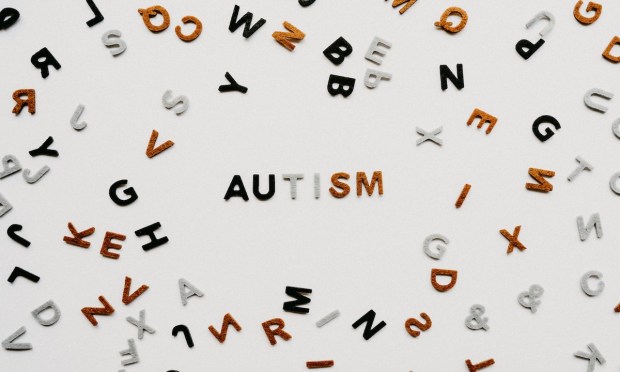Forta Health Pulls in $55 Million to Bridge Autism Caregiver Gaps Using AI

Autism diagnoses are on the rise in children all over the world.
In the U.S., for example, Autism Speaks reports that one in 36 children and one in 45 adults have been diagnosed with some level of autism spectrum disorder (ASD), up from just two years ago.
Now, a company is turning to artificial intelligence (AI) to reduce the friction people face when seeking treatment for the disorder. It is part of the growing role AI is playing in healthcare.
“Our current healthcare system is not able to provide dependable and quality care to families when they need it. When we identify areas of care shortages, we find ways to empower local and family caregivers with AI-based tools and education to deliver earlier and more effective interventions,” Ritankar Das, co-founder and CEO of Forta Health, told PYMNTS.
“We started by applying our platform to autism therapy because many families face years of waiting for care,” Das added. “Now, we are exploring how to expand the empowered home caregiver model to autism, memory care and other chronic conditions.”
Forta is an AI-driven healthcare company based in Silicon Valley focused on improving outcomes for chronic conditions. Its initial focus is improving access to therapy for ASD, using its algorithm paired with parent-led behavioral therapy. Within months of launching the program, Forta has supported hundreds of children with ASD and their families across the country. In a recent peer-reviewed study published in the Cureus Journal, 76% of individuals in therapy saw an improvement in therapy goal achievement using Forta’s model, compared to traditional approaches.
On Jan. 17, Forta announced a $55 million Series A funding round, which Das said will be used to increase R&D and enable the company to ramp up its next project, which is using AI to improve memory care. Forta has contracted with seven of the top 10 largest U.S. health insurance companies and over two dozen state government programs to bring its technology to clients.
The Forta model is not a one-off, easy-does-it application for parents and caregivers of autistic children. It involves rigorous training and certification. It starts by taking the medical records and situational information about the potential patient. After that application is reviewed and accepted, a customized learning plan is developed.
Most of that caregiver training is centered on Applied Behavior Analysis (ABA), which is a set of principles that focuses on how behaviors are affected by the environment and how learning takes place. That training takes 40 hours of coursework, which is administered by Forta’s clinical staff. It covers the basics of behavior therapy so parents can support their child’s development in cognition, communication, social and emotional skills and sensory processing.
It’s all based on a widely used CentralReach Institute-based curriculum (CRI). CRI is based on active caregiver intervention strategies, online course work, workshops and data-driven behavioral analysis. Some of that patient data includes test scores, grading responses to individual behavioral cues and reactions to various environmental factors.
In addition to the training, Forta provides virtual study sessions with a live instructor, support material, additional quizzes to aid in learning retention, one-on-one Q&A and an active community of other parents taking the course.
AI and large language models (LLMs) play at several levels in the process, according to Das, from onboarding to benchmarking.
“We take the background of the child and his or her medical records, and we also do that for the parents or other caregivers,” Das said. “Then you look at the data that describes the symptoms. And what you find out is that there’s a lot we don’t yet understand. You look at all the available individual data and compare it to previous cases. And you see that worked well for one patient might not work as well for other patients.
“Because it’s a spectrum of disorders, there’s a huge amount of variance among the data,” Das added. “AI helps us find clusters of cases that have similar conditions, and then it suggests a personalized therapy plan.”
The need for Forta and other at-home educational and treatment solutions is driven by gaps in the healthcare system.
Das said parents and caregivers have told his team stories about not being able to find treatment programs, or having to drive hours each day to get to one, and the toll it takes on the patient’s family. The role of the at-home caregiver is becoming more important, according to several sources, including Lauren Lowry, a Toronto-based speech language pathologist at The Hanen Centre.
“The power of involving parents in their child’s intervention cannot be underestimated,” Lowry wrote in an article. “Parent-implemented intervention provides a child with the most possible opportunities to learn, since they are learning during their everyday life, each and every day. And because they are learning new things at home with the people closest to them, learning becomes natural, motivating, and fun.
“When parents and speech language pathologists team up and collaborate in this way, it ensures that a child on the autism spectrum learns from the best possible teachers – their parents,” Lowry added.
With the funding round under his belt, Das said Forta’s personalized model will be applied to Alzheimer’s patients and those seeking memory loss care. The program will also be integrated into more U.S. state governments.
Das also pointed to how Forta’s quick onboarding process is helping children get the help they need in good time.
“Because our AI-model allows us to onboard people quite quickly, instead of them potentially missing the intervention window where an intervention is most effective, they can start as soon as they can,” Das said. “Because if you miss those golden years in a child’s life, you can’t get those back.”

